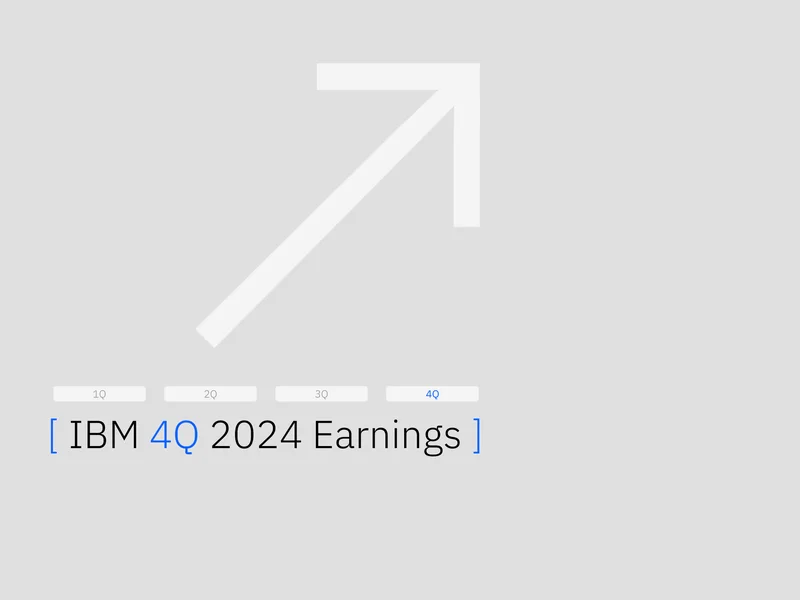Real-Time BNB Signal Analytics
Real-Time BNB Signal Analytics
On paper, IBM just delivered the kind of quarter that should have sent champagne corks flying. The report was a clean sweep: a beat on earnings, a beat on revenue, and a confident raise in full-year guidance. Adjusted earnings per share came in at $2.65, a full twenty cents above Wall Street’s consensus. Revenue hit $16.33 billion against a $16.09 billion expectation. Every single business segment—Software, Consulting, even the legacy Infrastructure division—posted strong numbers.
To cap it off, management raised its forecast for both revenue and free cash flow for the full year. CEO Arvind Krishna delivered the requisite optimistic soundbite about clients leveraging AI for "real business value." By every conventional metric, this was a win.
And then the market opened its mouth and rendered its verdict. The `ibm stock price` promptly fell off a cliff, dropping roughly 6% in extended trading. The disconnect is jarring. As CNBC reported, IBM tops third-quarter estimates and lifts guidance, but stock drops - CNBC. It’s the financial equivalent of a quarterback throwing a perfect, game-winning touchdown pass, only to turn around and see the scoreboard showing a loss. So, what exactly did the market see that the headline numbers missed? This isn't a story about a bad quarter; it's a story about the brutal physics of expectation.
Before we dissect the market's reaction, it’s critical to establish the context. IBM didn't walk into this earnings report as a beleaguered underdog. The stock had run up about 30% this year—to be more exact, 28.9% before the report dropped. That’s a significant move for a stalwart of the `dow jones`, a company many had written off as a legacy tech giant. This pre-earnings rally fundamentally changed the game. The market wasn’t just looking for a beat; it was priced for a blowout.
Think of it like a high-jumper. For months, IBM had been training, and everyone saw the progress. The bar for the third quarter was set at a respectable height ($16.09B in revenue). IBM cleared it. But after the stock’s 30% surge, investors had, in their own minds, raised the bar another foot higher. Simply clearing the official height wasn’t enough. They needed to see a gravity-defying leap that justified the newfound optimism, the kind of explosive growth that makes a stock like `nvidia stock` a market darling. IBM delivered a solid, professional performance. The market, however, was expecting a miracle.

The numbers themselves, while good, contain hints of this sobriety. The year-ago quarter’s net loss ($330 million) was heavily skewed by a one-time pension settlement charge, making the year-over-year profit swing look more dramatic than the underlying operational improvement. The 17% growth in Infrastructure, while impressive, is driven by mainframes—a powerful but cyclical business, not a secular growth engine. Is this a sustainable trend or a temporary refresh cycle? The report doesn't give us a clear answer.
And this is the part of the report that I find genuinely puzzling. The company's AI book of business reportedly jumped from $7.5 billion in the second quarter to over $9.5 billion. A $2 billion increase in a single quarter is massive. But the details on the composition of that revenue—how much is high-margin, recurring software versus lower-margin, one-time consulting projects—are frustratingly vague. For an analyst, that ambiguity is a red flag. Is IBM selling scalable AI products, or is it just selling more man-hours from its consultants to implement AI solutions?
This 6% drop isn't an indictment of IBM's turnaround. It’s a mathematical correction. The market is a forward-looking mechanism, and it’s grappling with one core question: after this solid quarter, what is the next catalyst that justifies another 30% climb? A beat on mainframes and a modest guidance bump aren't it. The market is addicted to exponential growth narratives, especially in the AI space. It wants to see numbers that look like `nvda` or hear a story that sounds like the early days of `tesla stock`.
IBM, for all its progress, is still a massive, complex ship to turn. It is replacing some roles with AI and growing its AI consulting book, but it isn't an agile startup. It's an industrial giant integrating new technology. The market's reaction signals that while it acknowledges the progress, it's unwilling to pay a premium growth multiple for what is, at its core, a story of steady, incremental improvement.
The sell-off is less about the numbers IBM just posted and more about the numbers it will have to post in the future. Can the company sustain this level of growth? What happens when the mainframe cycle peaks? More importantly, can IBM translate its "AI book of business" into the kind of high-margin, software-driven recurring revenue that truly excites investors? Until those questions have clearer answers, the stock may have found its short-term ceiling. This wasn't a punishment; it was a simple, cold-blooded recalibration.
Let's be perfectly clear: IBM did its job. The management team delivered a solid quarter that shows the company is on the right track. The problem wasn't in the C-suite or the sales department; it was in the stock chart. This was a classic case of the narrative getting ahead of the numbers. A 30% run-up priced in not just success, but perfection and a paradigm shift. What the company delivered was competence and solid execution. In today's market, which is starved for hyper-growth stories, competence just doesn't command the same premium it used to. The 6% decline wasn't a verdict on IBM's health. It was the market's way of reminding us that price is what you pay, but value is what you get, and the two had briefly drifted too far apart.